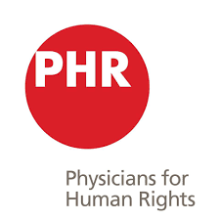Resource information
Executive Summary:
"In September 2011, as the international community discussed easing sanctions on Burma’s
military-backed civilian government, Physicians for Human Rights (PHR) conducted an emergency
investigation in Burma’s Kachin State in response to reports of grave human rights violations
in the region. The aims of the study were
1. to independently investigate reported human rights abuses and war crimes; and
2. to assess the humanitarian situation and nutritional status of internally displaced
persons (IDPs) displaced by conflict in 2011.
This report provides the first humanitarian assessment of some of the IDPs living in areas of
Kachin State that are not controlled by the Burmese government. The United Nations Office for
the Coordination of Humanitarian Affairs (UNOCHA) recently released a report on the health
situation of 5900 IDPs in urban and peri-urban areas of Kachin state that are under Burmese
government control. But no mention was made of the estimated 22,000 displaced people in
other areas of the state. PHR conducted its investigation entirely in these areas; this report will
help to build a more complete picture of the humanitarian situation among internally displaced
persons in politically contested areas in Kachin State.
The human rights investigation provides compelling evidence that the Burmese army (the
Tatmadaw) has committed multiple human rights violations in Kachin State. Between June and
September 2011, the Burmese army looted food from civilians, fired indiscriminately into villages,
threatened villages with attacks, and used civilians as porters, human minesweepers,
and impressed guides. Our findings are consistent with similar reports of human rights abuses
in other ethnic states, and suggest that violations of rights of ethnic nationalities in the country
by the central government are systematic and widespread.
In addition to the human rights investigation, PHR visited six camps and four shelters for displaced
Kachin civilians on the Sino-Burmese border and conducted health and nutrition assessments
from 22-30 September, 2011. The camps fail to meet multiple minimum humanitarian
standards outlined in the Sphere humanitarian guidelines. Camps are overcrowded and there
are insufficient numbers of latrines and water supply points. Camp medical staff reported that
upper respiratory infections and diarrhea were the most common reasons for clinic visits, and
that they experienced shortages in medicine for infants.
Key human rights findings of this report:
• The Burmese army forced Kachin civilians to guide combat units and walk in front of army
columns to trigger landmines. This practice puts civilians at extreme risk of injury and
death and is a war crime.
• The Burmese army regularly pillaged food and supplies from civilians. This practice is
prohibited under customary international humanitarian law.
• The Burmese army fired automatic weapons directly into a civilian village, striking nonmilitary
targets. The intentional direction of attacks against civilians is also recognized as
a war crime in the Rome Statute1, the treaty that created the International Criminal Court.
1. Rome Statute of the International Criminal Court, art. 8(2), 17 Jul. 1998, 2187 U.N.T.S. 90, entered into force 1 Jul,
2002.
4
Under Siege in Kachin State, Burma
Key related humanitarian concerns:
• IDP camps are overcrowded and the numbers of latrines and water supply points are
insufficient to ensure that residents’ human rights to clean food and water are met. Camp
medical staff reported insufficient supplies of medicine for infants.
• Eleven percent of children under five years old in one camp in Laiza were found to be
severely or moderately malnourished, a situation that the World Health Organization
(WHO) classifies as “severe” and warrants targeted supplementary feeding programs.
• Very little aid reaches IDP camps, and groups caring for them face challenges in providing
food, medicine, and shelter. The most vulnerable populations—those in rural areas and
near the border—have not received any official humanitarian aid; they are only receiving
aid from community-based organizations, which have largely been ignored by the
international donor community.
This investigation suggests that the incremental political changes in central Burma have not
translated into improved livelihoods or improved the human rights situation of ethnic populations
living along Burma’s frontiers. The government of Burma has announced greater freedoms,
including unblocking some internet websites and limiting censorship in the press, and
releasing Aung San Suu Kyi and a fraction of the other political prisoners in the country. Some
in the international community have asserted that political change has come to Burma; however,
these changes largely are confined to the urban, primarily ethnic Burman, population. For
many of the peoples of Burma facing conflict and abuse, including the Kachin peoples, the brutality
of the old regime remains an omnipresent threat.
PHR’s findings come at a crucial moment when the international community is considering
easing sanctions on Burma in response to its positive steps towards what Senior General Than
Shwe has called “disciplined democracy.” PHR welcomes the stated commitment of the government
to greater openness and urges the international community to ensure that the rhetoric
translates into positive action for all people in Burma. The Kachin and other groups continue to
endure grave human rights violations at the hands of the Burmese army. True progress must be
measured by thorough analysis of the extent of the government’s abuses and by establishing a
system through which perpetrators are held accountable for their actions...



